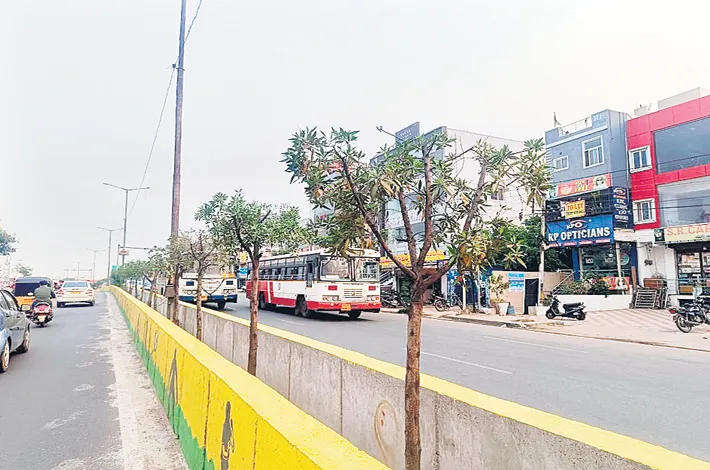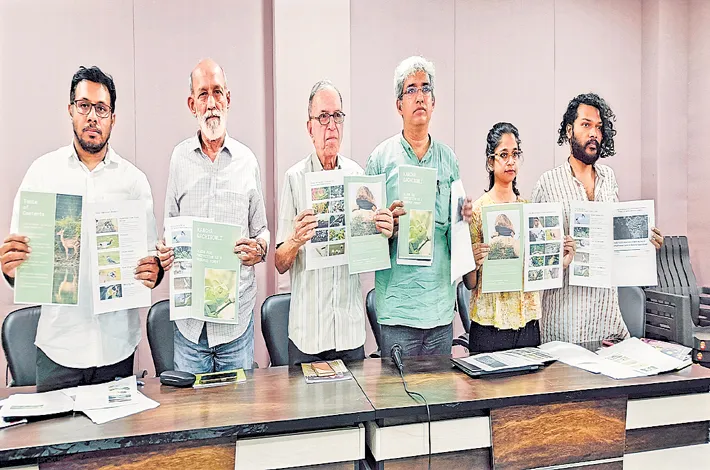Civic body acts on speakers advice, to curb the growth of Conocarpus trees
02-04-2025 12:00:00 AM

Metro India News | Hyderabad
The Greater Hyderabad Municipal Corporation (GHMC) is taking steps to prune Conocarpus trees within municipal limits to curb their growth and prevent them from flowering. The pollen from these trees has been linked to respiratory health issues, prompting authorities to limit their spread, especially in central medians and urban spaces.
It may be noted that in the recent Assembly session, Speaker Gaddam Prasad Kumar had stated that a total of 273 crore plants were planted and were harmful. This plant absorbs oxygen and emits carbon dioxide, and it does not provide a habitat for birds. According to him, these plants are widespread throughout Telangana, found in villages and along roadsides. He urged the State government to remove these plants from all areas of Telangana.
Water sumps to sustain parks
In response to the recurring issue of bore wells running empty in summer, GHMC, in collaboration with the Engineering Department, plans to dig sumps to store water. This stored water will be efficiently used via motors to irrigate plants according to their specific needs, reducing water wastage.
GHMC has identified several parks where borewells fail to provide sufficient water, necessitating frequent deployment of water tankers. Across Hyderabad, there are 1,049 landscape parks and 528 tree parks, Kukatpally zone, which has approximately 170 colony parks and 36 tree parks, Secunderabad zone, with 149 colony parks and 81 tree parks and Serilingampally zone with a total of 228 parks. This includes 160 colony parks, which serve as local recreational spaces, and 68 tree parks being the most affected.
Addressing watering challenges
Chief Horticultural Officer N. Sunanda explained that water tankers often unload excessive amounts of water on a few plants while neglecting others, leading to uneven distribution and loss of resources. The newly proposed sumps will allow controlled watering and ensure all plants get the required moisture. Additionally, due to heightened morning demand for tankers, GHMC is shifting to night-time watering schedules to optimize resource availability.
Pruning diseased and dry trees
GHMC's UBD wing is also focusing on pruning dried and diseased trees to prevent accidents during unexpected rains. In collaboration with HYDRAA, GHMC is working to remove hazardous plants from public spaces, mitigating risks for citizens.
Compost pits for sustainable manure
GHMC is launching compost pits inside parks to convert fallen leaves and organic waste into manure, a process that typically takes 45 days. The manure generated will be reutilized within GHMC parks to nourish trees and plants.An experimental composting project has been initiated in KBR Park, Jubilee Hills, with plans for expansion to other parks soon.








